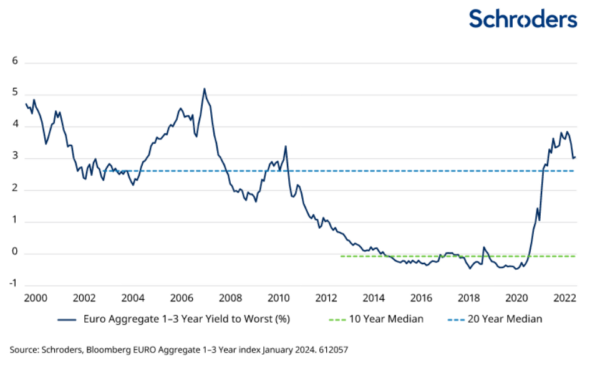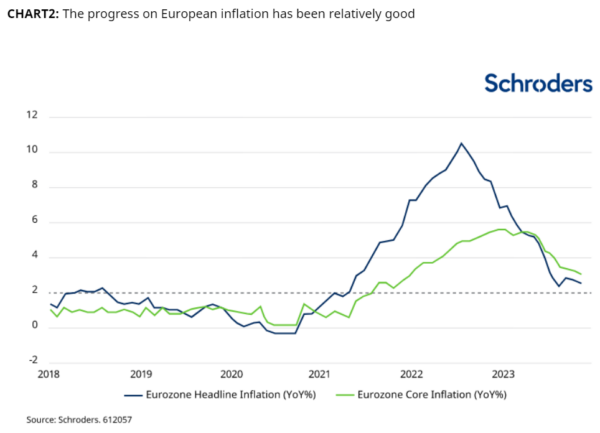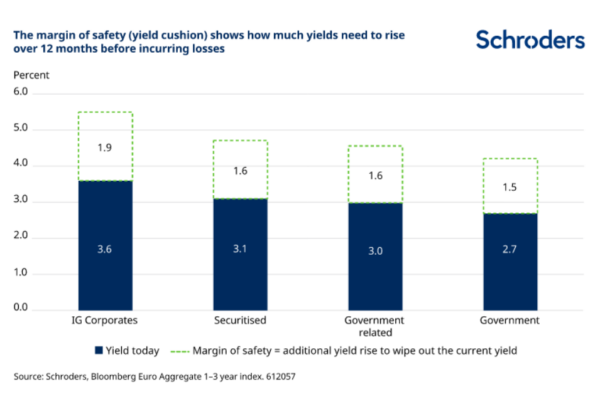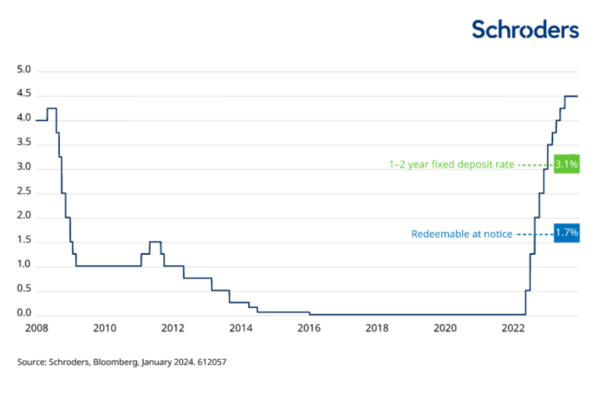Mar
2024
Could short-dated bonds provide an attractive alternative to cash?
DIY Investor
31 March 2024
Is it time to trade your cash for short-dated fixed income? The shift could be a multi-decade opportunity for savvy investors – by Karen Wright and Michael Lake
In this piece, we delve into the world of bonds with shorter maturities and their potential to offer a stable, less volatile alternative to cash.
When we discuss short-dated fixed income, we’re referring to bonds with shorter maturities, typically up to around three or five years. Due to their lower sensitivity to interest rate fluctuations, these bonds tend to be less volatile than their long-dated counterparts, making them an attractive option for investors contemplating a move away from cash. But that’s not the only reason to consider them now.
1. Short-dated bonds offer attractive valuations
The past few years have been challenging for bond investors, with high volatility keeping investors up at night and rapidly rising interest rates causing prices to tumble. But this has also created a unique opportunity. Fixed income investors can now benefit from significantly higher yields. The Bloomberg Euro Aggregate 1–3 Year Index, for example, now boasts yields above both the 10-year and 20-year medians.
CHART1: Valuations are currently looking attractive

Note: Based on annual returns since its inception, the Bloomberg Euro Aggregate 1–3-year index has outperformed cash on 20 occasions. Cash has outperformed in only 4 of those years.
2. The economic backdrop is supportive
Falling yields (yields move inversely to price) could provide an additional ‘kicker’ to bond returns. Our Global Unconstrained Fixed Income team’s base case is a ‘soft landing’, where central banks successfully curb inflation without damaging the economy. This environment should benefit both government and corporate bonds as interest rates fall and businesses are generally proving resilient.
Expectations are high for the European Central Bank (ECB) and other central banks to start cutting rates in the coming months as inflation pressures ease. A reduction in interest rates typically leads to an increase in bond prices, with increased demand for existing bonds with higher fixed coupons leading to an increase in prices. Lower interest rates also support business conditions, with lower borrowing costs making it easier for companies to pay coupons to bondholders.
CHART2: The progress on European inflation has been relatively good

3. The protective yield cushion – putting the ‘income’ back into fixed income
Higher yields in short-dated fixed income now provide the best safety margin against capital losses in years. This “yield cushion” is the protective effect that this income can have on a bond investment. If bond prices fall (which would result in a capital loss if the bond were sold), the income generated by the bond can offset some or all of this loss. In other words, the yield provides a “cushion” against declines in the bond’s price.
The yield cushion is particularly important for investors concerned about capital losses.
This chart is based on the Bloomberg Euro Aggregate Index 1-3 year.
CHART3: The yield cushion is providing the highest margin of safety against capital losses for many years

4. Cash rates may lose their appeal
With deposit rates closely linked to monetary policy, the attractive interest rates on deposits enjoyed over the past year may not last. In fact, actual deposit rates are often already lower than those inferred by central banks. According to ECB data, the average deposit rate (redeemable at notice) is just 1.7%. By investing in short-dated fixed income, investors can lock in higher yields, as demonstrated in the chart above, for a longer period.
CHART4: Deposit rates are likely to fall. The yield you get on short dated fixed income is already higher than most deposit rates.
Important information
This communication is marketing material. The views and opinions contained herein are those of the named author(s) on this page, and may not necessarily represent views expressed or reflected in other Schroders communications, strategies or funds.
This document is intended to be for information purposes only and it is not intended as promotional material in any respect. The material is not intended as an offer or solicitation for the purchase or sale of any financial instrument. The material is not intended to provide, and should not be relied on for, accounting, legal or tax advice, or investment recommendations. Information herein is believed to be reliable but Schroder Investment Management Ltd (Schroders) does not warrant its completeness or accuracy.
The data has been sourced by Schroders and should be independently verified before further publication or use. No responsibility can be accepted for error of fact or opinion. This does not exclude or restrict any duty or liability that Schroders has to its customers under the Financial Services and Markets Act 2000 (as amended from time to time) or any other regulatory system. Reliance should not be placed on the views and information in the document when taking individual investment and/or strategic decisions.
Past Performance is not a guide to future performance. The value of investments and the income from them may go down as well as up and investors may not get back the amounts originally invested. Exchange rate changes may cause the value of any overseas investments to rise or fall.
Any sectors, securities, regions or countries shown above are for illustrative purposes only and are not to be considered a recommendation to buy or sell.
The forecasts included should not be relied upon, are not guaranteed and are provided only as at the date of issue. Our forecasts are based on our own assumptions which may change. Forecasts and assumptions may be affected by external economic or other factors.
Issued by Schroder Unit Trusts Limited, 1 London Wall Place, London EC2Y 5AU. Registered Number 4191730 England. Authorised and regulated by the Financial Conduct Authority.
Alternative investments Commentary » Commentary » Fixed income Commentary » Fixed income Latest » Investment trusts Commentary » Latest

Leave a Reply
You must be logged in to post a comment.